Secrets of a Hollywood Food Stylist
Nancy Goodman Iland has worked on everything from 'Murder She Wrote' to 'Lessons in Chemistry' and shares a few tips and tricks (hint: sometimes ice cream is really mashed potatoes!), plus 2 recipes!

The chicken pot pie in the Apple TV+ show Lessons in Chemistry isn’t up for an award at this year’s Emmys on Sunday, Sept. 15, but perhaps it should be! It has a starring role in the drama based on the best-selling novel of the same name by Bonnie Garmus, with Elizabeth Zott (played by actress Brie Larson) as a frustrated lab tech in the 1950s dealing with extreme sexism in her quest to become a scientist.
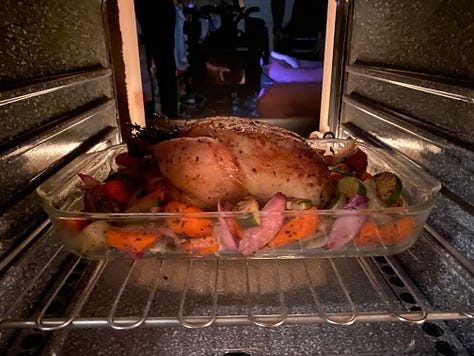
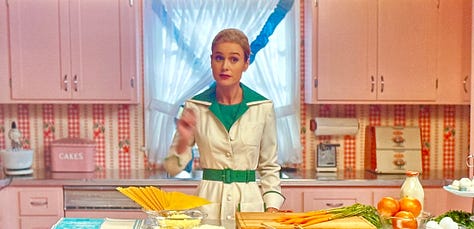
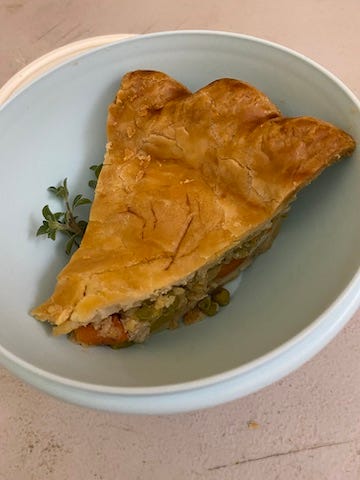
A pivotal scene occurs when Elizabeth hands a piece of chicken pot pie in a Tupperware container to a TV producer who is searching for a new host for a food show, Supper at Six. She scolds him for feeding his own daughter so badly that the girl eats Elizabeth’s daughter’s lunch. The producer is so taken with her—and the pie—that he recruits her for the host position. The pie also shows up in another scene in which Elizabeth takes a big bite of the beautiful pie she’s just baked, immediately runs to the sink to get sick, and suspects she’s pregnant. (Later, an unusual test involving injecting a frog with her urine confirms it!)
The Apple TV+ show (which I found very enjoyable, along with the book!) has been nominated for 10 Emmys, including for the main protagonists and the show itself, though not for veteran food stylist Nancy Goodman Iland, who created much of the food that has such a prominent role in the series. There isn’t a category for food styling at the Emmys, just for the prop master who oversees her work.
I spoke with Goodman Iland recently about her job on this series, as well as her 32-year career as a food stylist, highlights of which you can find in a reel that’s on her website, FoodArtLA.com, and below:
It is, as she says at the end of the reel, her “favorite, dream job,” combining two of her great passions—food and art. But, as with so many careers, this wasn’t something Goodman Iland set out to do.
A lucky break
Growing up in Los Angeles, she, “like every other little girl,” wanted to be an actor, Goodman Iland told me. But she was pragmatic and didn’t want to be a starving actor, nor a starving dancer for that matter, so she switched from her initial dance major at California State University, Northridge, to international business and then to art, with a specialty in the three-dimensional variety, namely interior design and set design.
After college, she started working in the art department of the company that produced some of the top shows of the era—among them, Golden Girls, Empty Nest, Nurses, Herman’s Head, and Blossom. Her job was to make sure that when there were scene changes in the script, they were made on the set.

Food designers work for the prop department, and Goodman Iland, who had maintained a side gig as a caterer, got a lucky break one day.
“One of my contacts called me and said the food stylist on Murder She Wrote wasn’t able to make it. Could I come? Well, it turned out the girl had moved to Jamaica. And that’s how I got started.”
That was in 1992, and after working on the final four seasons of the popular murder mystery series starring Angela Lansbury as the indomitable Jessica Fletcher, Nancy Goodman Iland’s career as “Food Stylist to the Stars” was launched. Her jobs included not only work in television and film but also in commercials and print.
Among the shows (and movies) she has worked on: Kitchen Confidential, Ballers, Veep, Bosch, Goliath, A Star is Born (the 2018 film), and King Richard. (There are many, many more credits that you can find at her website: FoodArtLA.)
Combining twin passions
What about the food part of her career? How did that come about?
“I liked to cook but I never wanted to be a chef. That wasn't my thing,” Goodman Iland said. “I wanted to be creative and do fun things with sets.”
Still, coming from a large Jewish family in which everything centered around food, cooking was probably in her DNA (I can definitely relate to that!).
“We always cooked at home. My parents were really good cooks, and my grandparents too,” she said. “And yes, I did start at McDonald’s as my first job.”
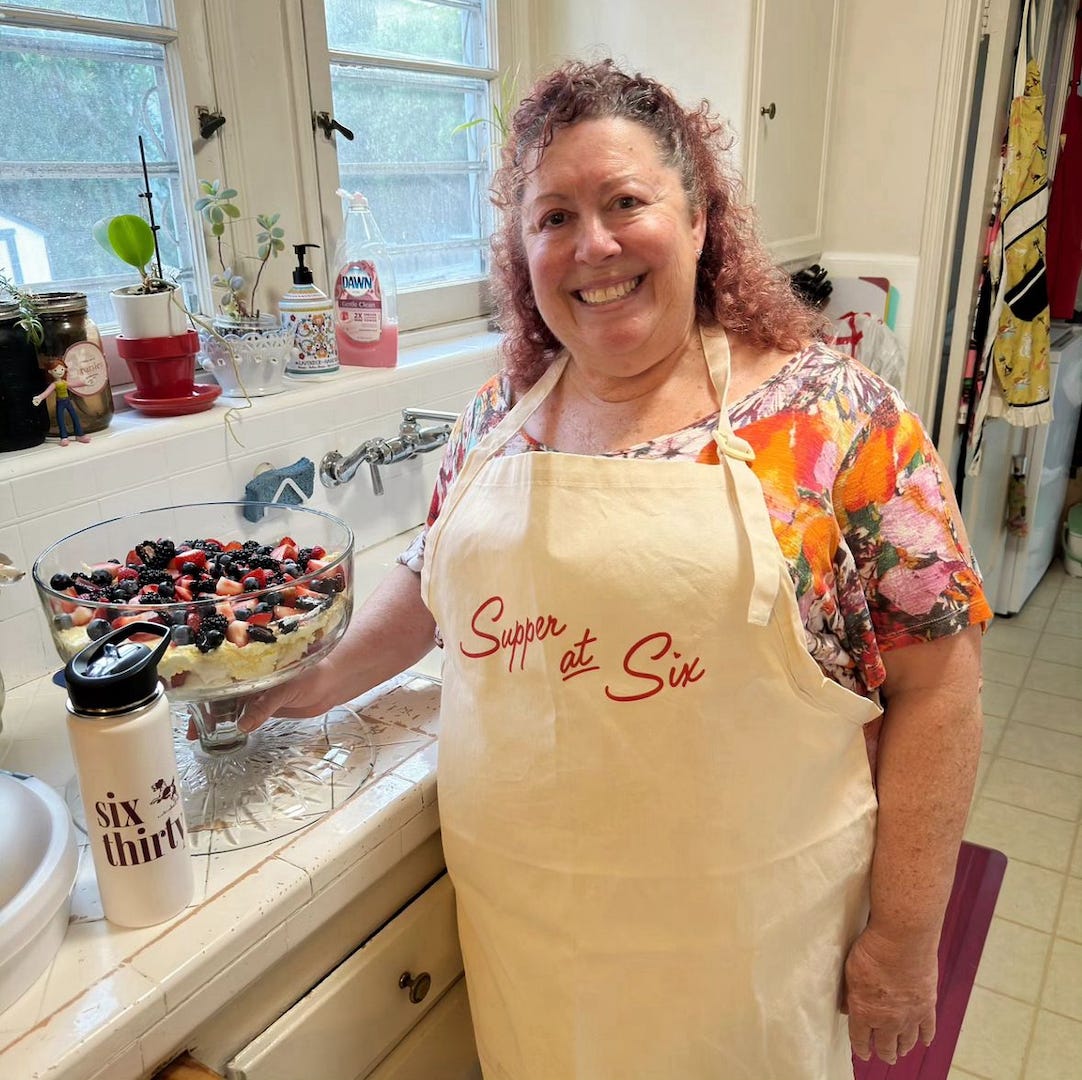
That was in high school. In college, she worked in a catering kitchen with a cousin, then eventually owned her own business (catering is still something she does). But it was the artistic side of food that called to her and has kept her engaged and employed for the past 32 years.
Behind the scenes
Just knowing how to cook or having an artistic sensibility isn’t all there is to being a food stylist, of course. Goodman Iland talked about some of the requirements and challenges of the profession.
You have to be able to make every kind of food imaginable, from diner fare to the cuisine at a fancy French restaurant. “I get a call from the prop master and they’ll tell me what the scene is,” she explained. “Some like to micromanage it, and some leave it to me.”
Not only do you have to be able to make different kinds of food, you have to make a LOT of it because directors will do the scenes over and over again. “My magic number is 16 (servings) for 16 takes,” Goodman Iland said. “If it’s at beginning of the meal, you have to have 16 steaks. If you’re midway through the show, it might be less. There are times when I have a lot left over and other times when I'm stretching it.” And when there are leftovers, she frequently donates them to a Los Angeles women’s shelter.

Sometimes the food may not be what you think it is. A lot of dishes don’t fare well under the bright lights or survive the hours it may take to shoot a scene. For instance the ice cream in a sundae may actually be mashed potatoes! And though the strawberries may look fresh, they might actually have been cooked a bit because fresh berries tend to wilt. The principle character will probably get real ice cream, while the secondary ones will get the mashed potatoes, Goodman Iland said. But it’s up to the director; he/she may want everyone to have ice cream. “You have to think ahead,” she said. (Check out the video below for an interview with Nancy Goodman Iland on KCAL News Los Angeles and more on those “ice cream” sundaes.)
Mashed potato ice cream aside, Goodman Iland’s food is almost always edible and usually delicious, she said. “My philosophy is it's got to taste good; That’s why I’ve been around for so many years!”
One of the first things Goodman Iland does when she gets a new assignment is to ask about the actors’ food preferences, allergies and dietary concerns. A “roast” for a vegan may be made of lentils or purchased from Trader Joe’s. A frittata could be made with potatoes and onions—no butter, eggs or cheese. “It’s still delicious and looks great,” she said.
Doing research into the time period of the show or film is essential to make sure the food is as authentic as the set design. For a Murder She Wrote episode that included a flashback to a wedding on a plantation in 1852, Goodman Iland consulted with the librarian at the Los Angeles Public Library (this was prior to Google). The librarian discovered a diary from that time and place that described a three-tier, Colonial-style cake “with a lot of swag and a loving cup on top,” she said. She was able to recreate it for the episode.
Sometimes the food stylist has to be a teacher, as in Kitchen Confidential in 2005, which was inspired by chef Anthony Bourdain’s memoir of the same name, with Bradley Cooper playing the lead as a chef running the kitchen in a high-end restaurant. Goodman Iland began by taking the actors (who were playing chefs but had no experience) to a kitchen at Fox Studios to teach them how to skin fish.
Occasionally Goodman Iland moves out of the background. On the show Undercover, she tried to teach someone how to flambé a dish and ended up taking the part herself. In a Murder She Wrote episode, she was recruited to play in a scene because “I was wearing a cute dress, I had red hair, and the guy said ‘You look Irish.’ ”
The downside of making all this wonderful food is that sometimes it doesn’t make the final cut. For the sports comedy drama Ballers, Goodman Iland and her team made a multi-layered seafood tower with lobster, crab, oysters and mussels. It was a gorgeous display on a nine-foot table. “A guy walks by and eats a shrimp and puts the tail down. And all you saw (in the scene) were three crab legs,” she said.
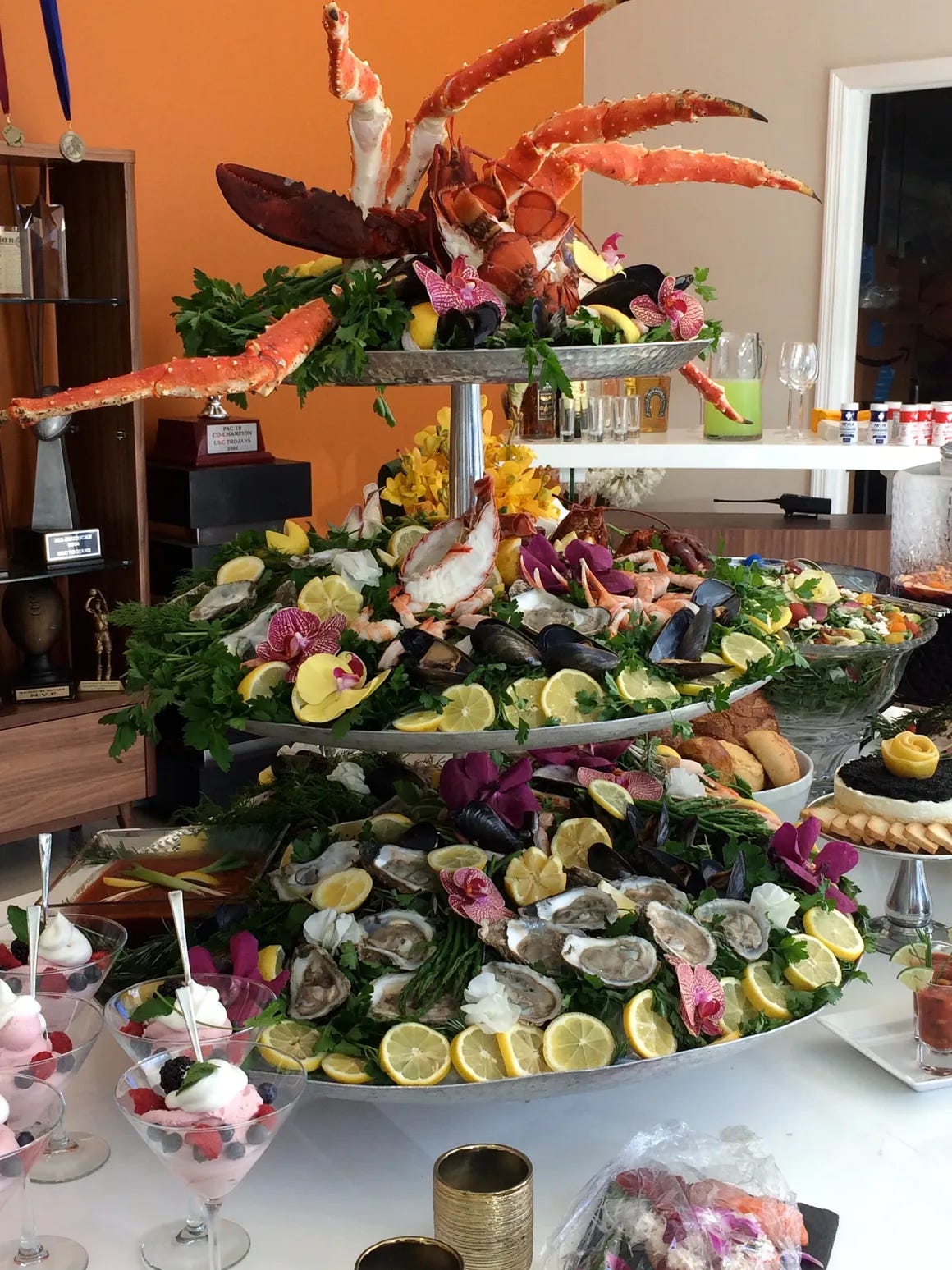
For her work Goodman Iland often carts hot and cold food from her kitchen in the back of her SUV, a Honda Pilot with the license plate FOODART. “I have to be able to fit a whole kitchen in my car,” she said. “There are times when I’m bringing two ice chests, four hot boxes, my tools and other items. The car is loaded to the gills.” And everything is on wheels!
Does she have help? “For the first 18 years I did it all myself. By the time I finished there were five or six of us. Depending of the show, I can bring in more staff.” For the last seven or eight years, she’s had an assistant, Wendy Roskin, a friend of many years, and a former executive chef and teacher.
Add a little color!
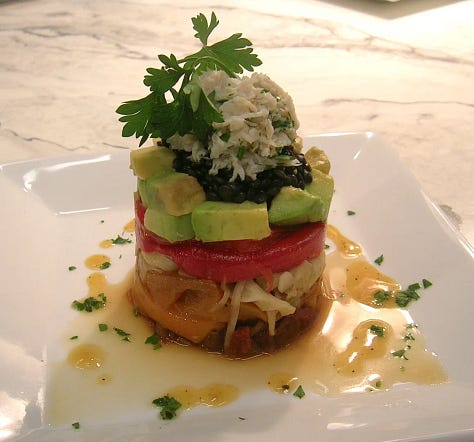
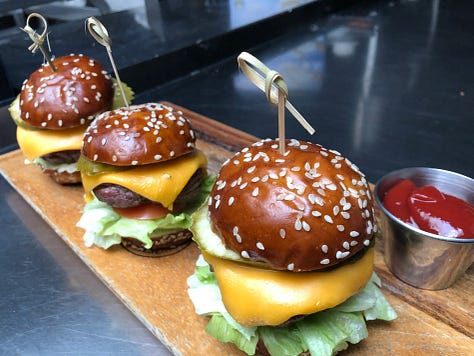
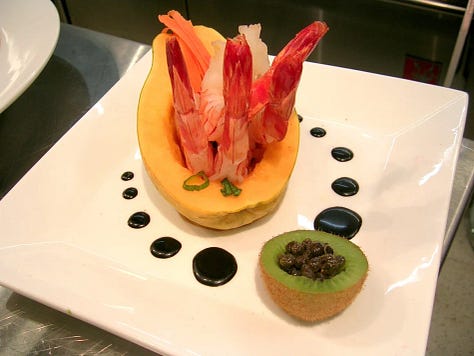
I’m a reasonably good cook, but I just don’t have the artistic eye that it takes to be a food stylist. Still, Nancy Goodman Iland has some good ideas that might help most of us to at least make the food we serve more appetizing. After all, as someone once told me, “we eat with our eyes first.”
“The most important thing is you want different textures, colors, heights,” Goodman Iland said. “A lot of my food is very colorful. I call it whimsical.”
When it comes to color, sometimes it’s a matter of adding a pop of parsley to relieve a sea of brown. In the romantic comedy Jane the Virgin, there were edible fuchsia-colored orchids on the set. “If the dish was green beans and steak, I would put that orchid on it. You can throw a little sauce onto the plate. Just be conscious of what colors are there,” she said.
Advice for would-be food stylists
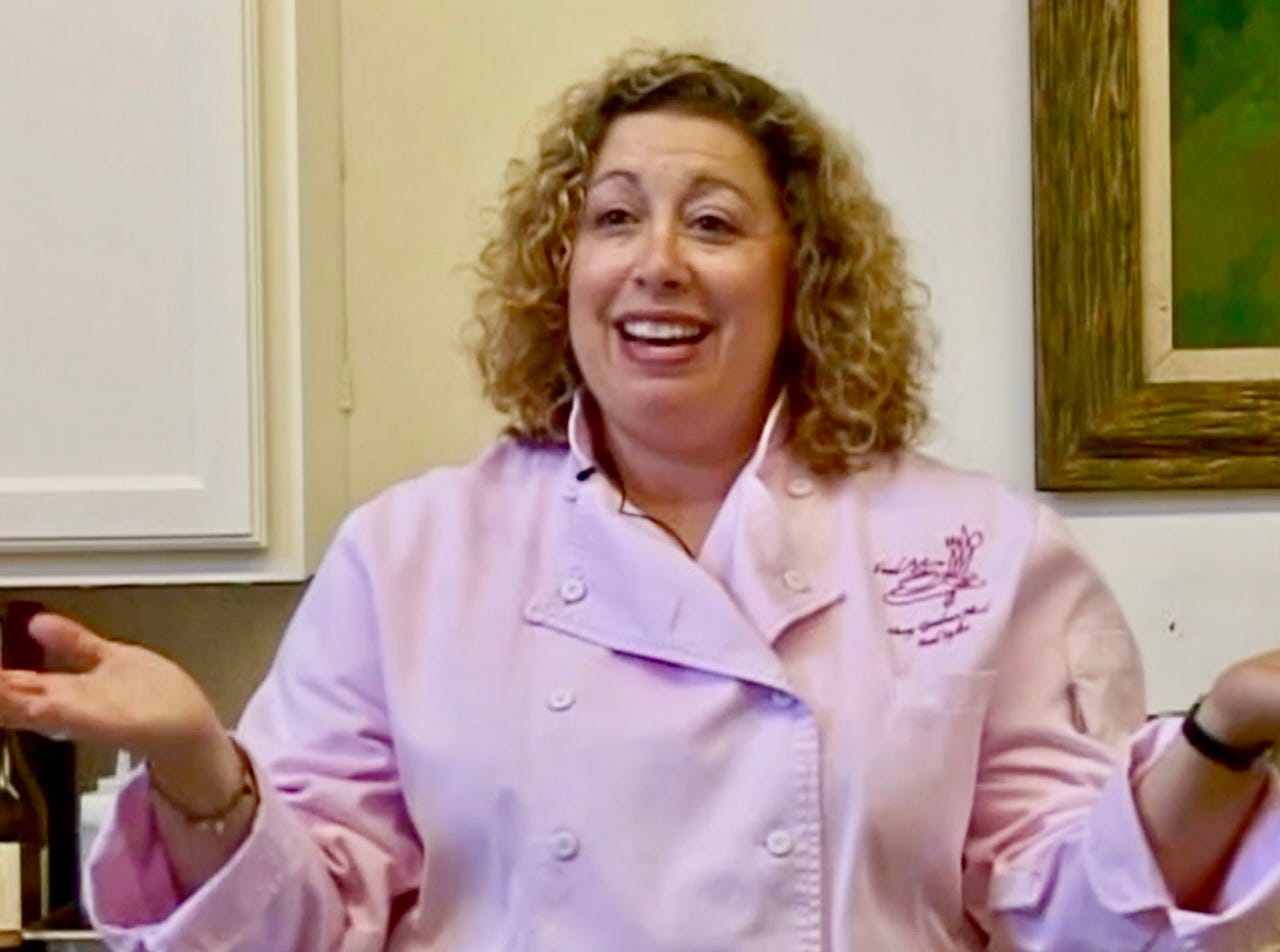
For those who think they might want to do what she does, Goodman Iland suggests beginning as an apprentice to see if it’s something you really enjoy.
“There are a lot of chefs who want to be food stylists, but they’re used to working in a kitchen eight hours and then they’re done. Our job isn’t that. Our job is rush, rush, rush, set up. You have to be able to work spontaneously, often for more than one day. Sometimes I need (something) tomorrow. It’s not like you can say, ‘I made other plans. I can’t work today.’ ”
Food stylists need to be flexible and have a good work ethic, she added.
“If they’re just coming out of culinary school, I would ask them, ‘Were you on time? Were you prepared?’ ”
In L.A., the land of freeways and slow and spotty public transportation, having a car is essential—depending on Uber won’t cut it, she said. And bringing your dog to work probably isn’t a good idea either.
“I just had friend who lost her job over a dog,” Goodman Iland said. “She didn't get that she couldn’t bring a dog to work.”
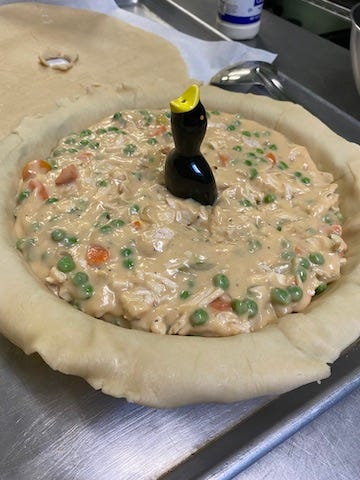


And finally, recipes!
It was great to get a peek into a world few of us have encountered except from the couch or in the movie theater, so I’m grateful to Nancy Goodman Iland for being my patient guide—all by phone and text. Hopefully one day I’ll get a firsthand glimpse of what she does on the set or in her kitchen. Meanwhile I can tell that she’s not only a skilled food stylist but also a great cook.
She shared two recipes with me. One is for that fabulous chicken pot pie, and the second is for a chocolate chip streusel cake—a family recipe that her parents used to serve at Sierra Mesa Lodge, a bed-and-breakfast they once owned in Ruidoso, New Mexico.
In Lessons in Chemistry, the cake made an appearance in a scene in which Elizabeth Zott is cooking with her daughter Mad.
Goodman Iland’s parents would serve it to guests with coffee in the afternoon. Along with the chicken pot pie, it’s definitely joining the list of dishes I want to bake once our steamy Southern California temps finally simmer down!
Below is the recipe for Goodman Iland’s chicken pot pie. It calls for “2 pie dough discs.” Making pie crust is “so time-consuming, I usually buy already made,” she told me.
Her favorites are Trader Joe’s frozen pie crusts, but she also likes gluten-free crusts that you can find at most grocery stores. When she makes her own, she often follows a recipe and video from Erin McDowell. The YouTube video includes a lesson on how to make a rope crimp—the signature edge on the pies in Lessons in Chemistry!
Here’s a link to a PDF with the recipe for the filling for the famous pie. Please let me know if you give it a try!
That’s it for today, folks! Thanks for reading, liking and sharing this post and for being (or becoming) a subscriber. Have you had an interesting job in the food industry? Have you ever worked as food stylist? Are you a fan of chicken pot pie? I’d love to hear about it!
See you next time!
Ruth





When I first read the title, I immediately thought of the type of food styling done for commercials where the food is rarely edible – having to use real ingredients and somehow make it tasty is a whole different ball game. So interesting, thanks for sharing!
This is so interesting and a fabulously creative career, what a list of shows/movies, etc! Loved this, Ruth! (I use a pie bird, too, so retro!) 🐦